Superb Marshall anniversary display at Haddenham Steam Rally
Posted by Chris Graham on 7th December 2023
Ian Palmer takes a look at the superb Marshall anniversary display gathered at Haddenham Steam Rally, on September 16th-17th.
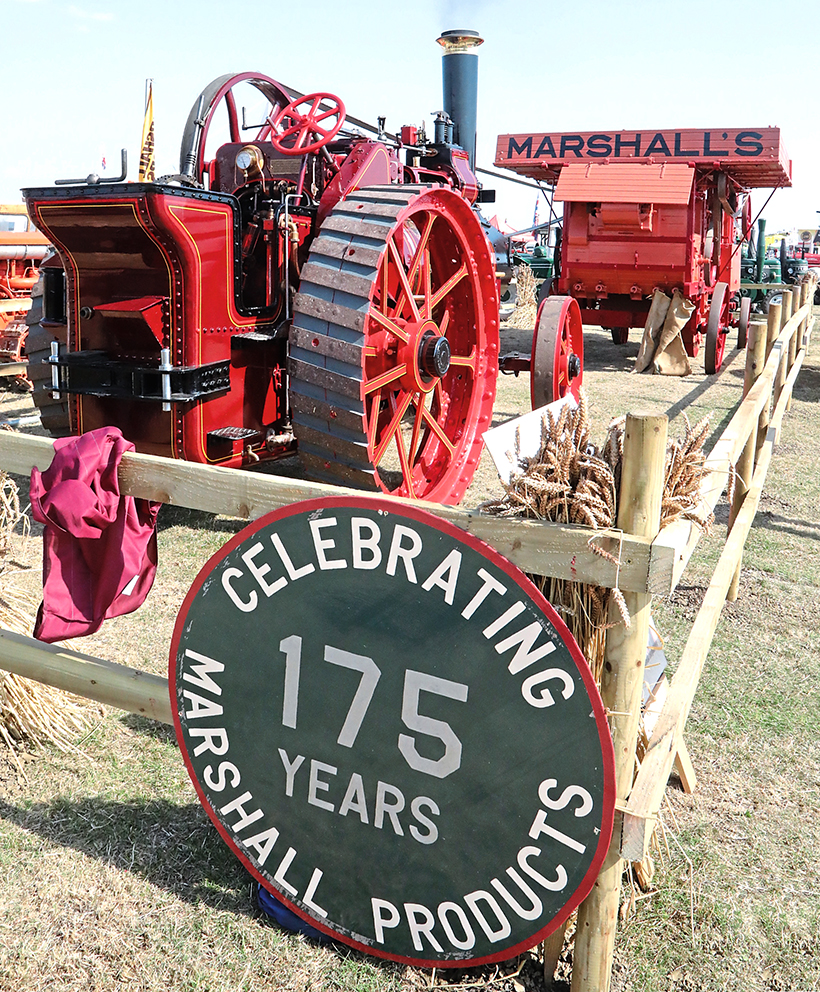
Marshall anniversary display: What a wonderful September sight as Iron Horse gets ready to do some threshing at Haddenham. (Pic: Peter Love)
Back in February, 2023, I received a message from Richard Freeman, stating that he’d heard that 2023 marked the 175th anniversary of William Marshall setting up his business in Gainsborough, and asking whether I’d be prepared to bring the Marshall Club merchandise stall to the Haddenham Steam Rally in September?
He explained that there’s a special display of exhibits and literature every year at the Haddenham rally and that, this year, he wanted it to spotlight Marshall of Gainsborough. I agreed that, even though the Marshall Club hadn’t been to the rally before, it would be possible to attend. Then, over the six months that followed, I was in constant communication with Richard, sending him Marshall literature which could be used in the display, then we met for the first time at the Stradsett Rally, in May.
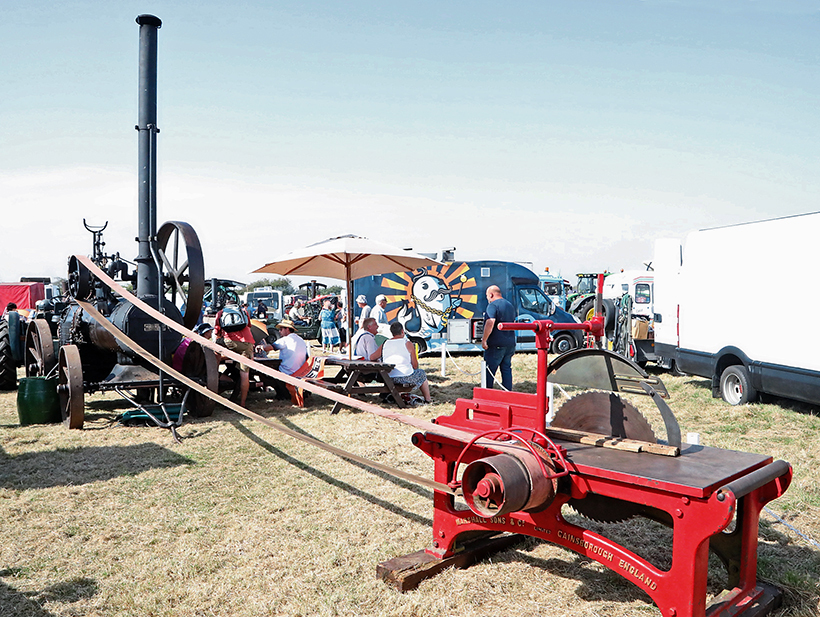
Portable No. 45028 and saw bench, owned by Keith Grimsay. (Pic: Peter Love)
Arriving at Haddenham on the Friday afternoon of the rally weekend, I was welcomed warmly by Richard and his four assistants – Jonny Bye, Elizabeth Cooper, Kay Whitbread and Peter Whitbread – who would be responsible for setting up the display of literature in the marquee, and for lining up the Marshall exhibits. I’d also like to thank Donna Rankin and Stephen Pearsall for helping me on the Marshall Club merchandise stall over the weekend, and Paul Gregory for supplying most of the photographs. I must also mention Richard’s dad, Alan Freeman, as he is the person who hand-painted the magnificent Marshall arch and tractor wheel signs, which were part of the Marshall display.
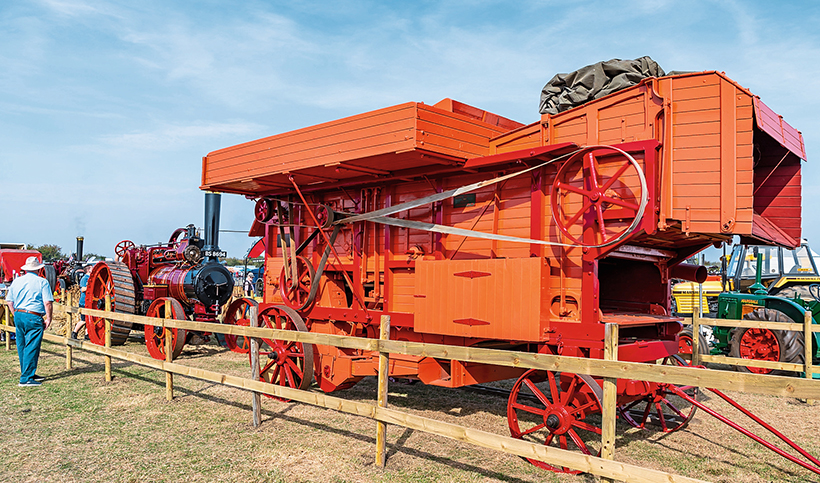
1907 Marshall 6hp GP No. 48076, which spent its working life on the Isle of Man, with thrashing drum No. 33219 owned by the Peacocks. (Pic: Paul Gregory)
Now I’d like to provide a brief outline of the products made by Marshalls, accompanied by photographs taken of the exhibits at the Haddenham Rally. By 1856 William Marshall’s two sons – James and Henry Dickenson – had entered the business, and were pestering their father to build portable steam engines to provide power for their thrashing machines and saw benches. The 6nhp portable steam engine on display at the show was built in 1906 (with works No. 45028) and, having originally been exported to Chile, was repatriated back to the UK in the 1990s. It was shown driving a saw bench, with both exhibits owned by Keith Grimsay.
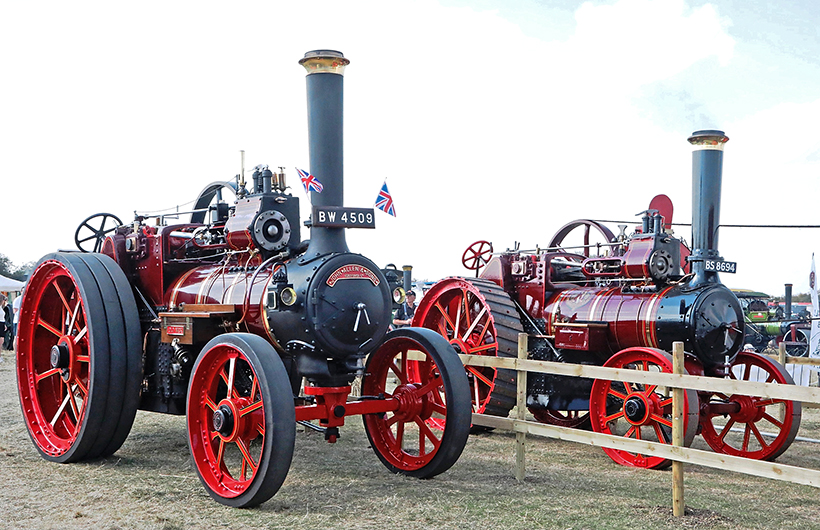
Old Nick joins Iron Horse in the early afternoon of the show. (Pic: Peter Love)
Marshalls built its first traction engine in 1876, and the example at Haddenham, together with a Class A threshing machine, are owned by Matthew and Barry Peacock. The 6nhp engine, (No. 48076), Iron Horse, BS 8694, was new at the Lancashire Show in 1907, and spent its working life on the Isle of Man, being used for wood sawing. The engine later survived spells in two scrapyards, before returning to the mainland with Alan Stevens. Bicknells carried out the boiler work on the engine, but various parts were missing. It was steamed in 2019, 70 years after it last been used. Over the last two years it’s had new paintwork, courtesy of Barry Peacock, and has been finished off in various ways and is now carrying the correct engine number. The thrashing drum (works No. 33219), was new to Edwards of Raveley, in Huntingdonshire, and has recently been refurbished and painted by the owner.
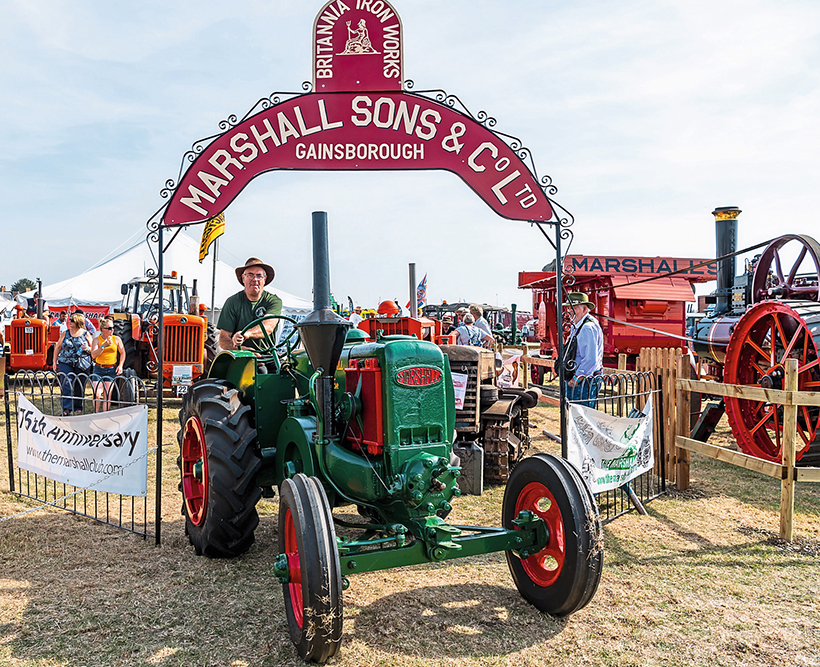
1936 12/20 owned by Peter Goddard. (Pic: Paul Gregory)
Also at the show was 1908 Marshall 7hp GP No. 49725 Old Nick, which has recently returned to the rally field after an overhaul, with Mervin Mayes carrying out the boiler work and Marston Steam Restorations the final work. The ex-Allen of Oxford engine carries a correct 7hp chimney these days and it briefly stood beside 6hp No. 48076 on Saturday at the show. In fact, Marshalls made double the amount of 6hp engines compared to 7s.
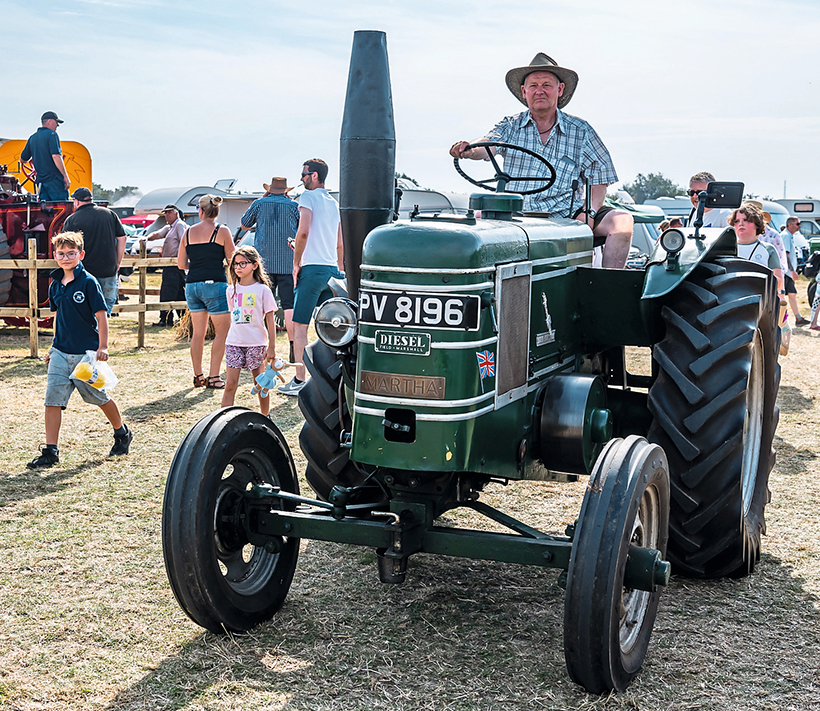
Stephen Pearsall on his 1947 Field Marshall Series 1. (Pic: Paul Gregory)
The first Marshall oil tractor was built in 1908 for the UK market, and this was followed by larger tractors for export to the Colonies. Production then ceased in 1914, following the outbreak of World War 1. Marshall’s first single-cylinder diesel tractor was the 15/30 (15hp on the drawbar, and 30hp on the belt) and it made its debut at the 1930 World Tractor Trials. Price new was £315 and about 70 were built. In 1932 it received several improvements and became known as the 18/30, now having an oval tank, and was manufactured between 1932 and 1937.

Jonny Bye on his Field Marshall Series 2. (Pic: Paul Gregory)
In 1934, the Marshall board announced that the company was to be put into receivership and, in 1935, Thomas Ward came to the rescue, marking the end of the Marshall family’s involvement with the firm. A new, smaller tractor, along the lines of the Fordson N, was built between 1935 and 1938, and was known as the 12/20. The price of this model was £285, and approximately 190 were built. The example at the rally is owned by Peter Goddard and was built in 1936.
An updated 12/20 became the Model M in 1938, priced at £375 and with about 900 made. There was an example of a Model M inside the marquee, owned by R Coe and S Bunting. The Marshall company again concentrated on manufacturing armaments during World War II then, in 1945, a new corporate brand range of products was introduced, which included the Field Marshall, the Road Marshall and the Grain Marshall.
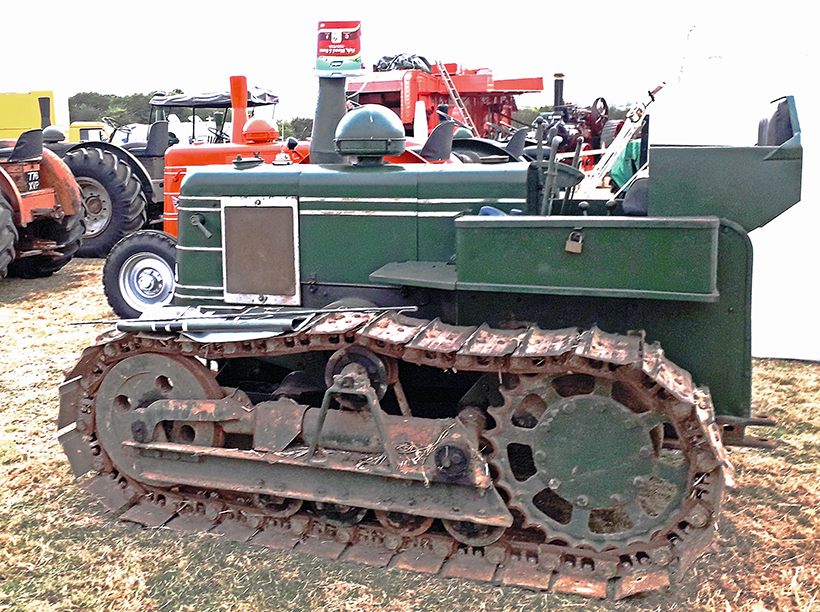
1950 Fowler VF owned by N Websdale. (Pic: Ian Palmer)
The Series 1 38hp Field Marshall was manufactured between 1945 and 1947, with the Mark 1 being the standard agricultural tractor (price at £550), and the Mark 2 being the Contractors version (with rag top canopy, lights and winch). There were 2,011 units made, which included the Standard and Contractor versions. At Haddenham there were three Series 1 tractors owned by Andrew Parker, Alastair Hopkin and Stephen Pearsall/Donna Rankin.

Alan Freeman on the Series 3 owned by his son, Richard Freeman. (Pic: Paul Gregory)
In 1947, design changes were made to the Field Marshall, including increasing the power to 40hp with better cooling, a larger clutch and improved brakes. Again, the Series 2 was available in Standard or Contractor versions; the canopy was discontinued, but a Portland cab was offered as an optional extra. Price was then £625 for the Standard model and some 7,000 were sold. The nine Series 2 tractors at Haddenham were owned by P Smith, N Websdale, J Papworth, Oliver Hopkin, Andrew Parker, K Jackson, D Giles, M&F Fowler and Jonny Bye.
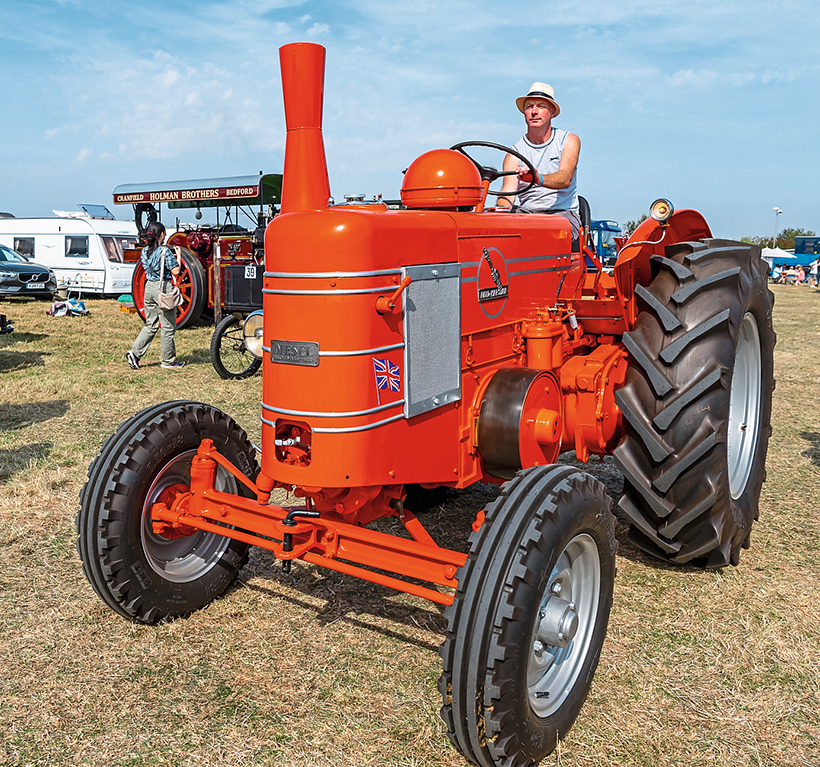
Daryl Copeman on his 1953 Series 3A. (Pic: Paul Gregory)
The acquisition of John Fowler into the Marshall Organisation by the Ward Group in 1946, resulted in the Fowler VF crawler tractor, incorporating the Series 2 Field Marshall engine and bonnet with Fowler track running gear. The price was initially £1,060 and, during its production years running between 1948 and 1952, 4,658 units were made. The 1950 VF on show is owned by N Websdale.
In 1950, Marshall realised that a larger Field Marshall model was needed, capable of being used for heavy cultivation work. The result was the Field Marshall Series 3, priced at £714 and around 3,205 of this model were built. There were three Series 3 tractors at Haddenham, owned by Terry Young, Andrew Parker and Richard Freeman. Richard’s tractor was driven into the ring by his father, Alan.
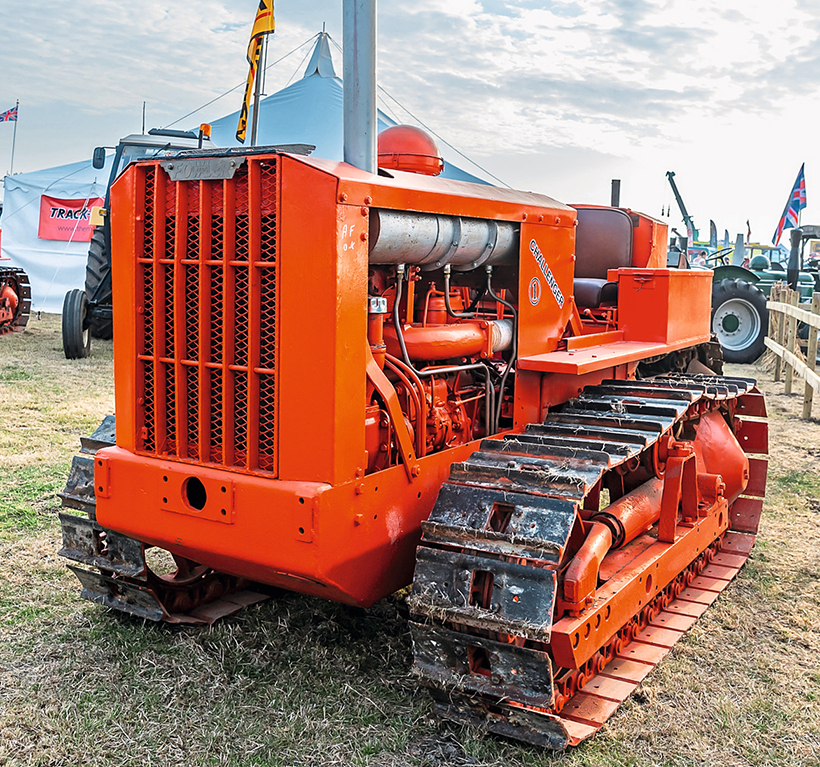
SR Haylock’s Fowler Challenger 1. (Pic: Paul Gregory)
Marshalls followed a policy of continually upgrading its products, and the Series 3 was succeeded by the 3A, manufactured between 1952 and 1956. The Series 3A tractors were initially painted in mid-Brunswick green until 1953 but, from then onwards, in Fowler Chrome Orange, to provide uniformity with the Fowlers at shows and exhibitions. Priced new they were £845, and approximately 2,125 were built. There were two Series 3A tractors on show, one with original paintwork that had been brought back from France and is now owned by Nick Allen. The second, which won the ‘Best Marshall at Show’ award, is owned by Daryl Copeman.
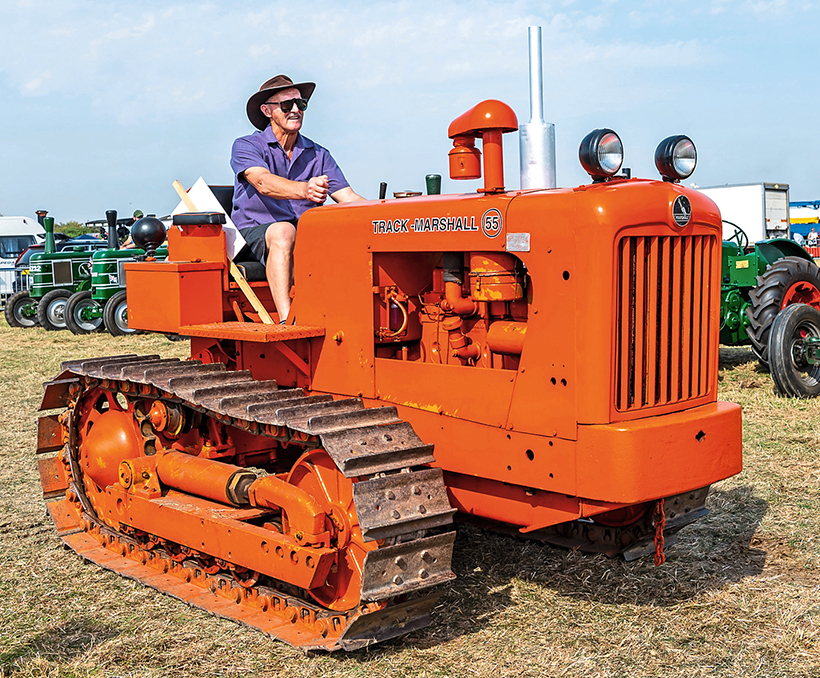
1961 Track Marshall 55 owned by M Short. (Pic: Paul Gregory)
At the Smithfield Show in December 1951, Fowler exhibited a new crawler tractor, the Challenger 1, which used a Marshall-designed, twin-cylinder, water-cooled, loop-scavenged, two-stroke diesel engine. Approximately 50 units were made between 1951 and 1955 and, at Haddenham, there was an example owned by SR Haylock. Subsequent multi-cylinder crawler tractors followed under the ‘Fowler’ name.
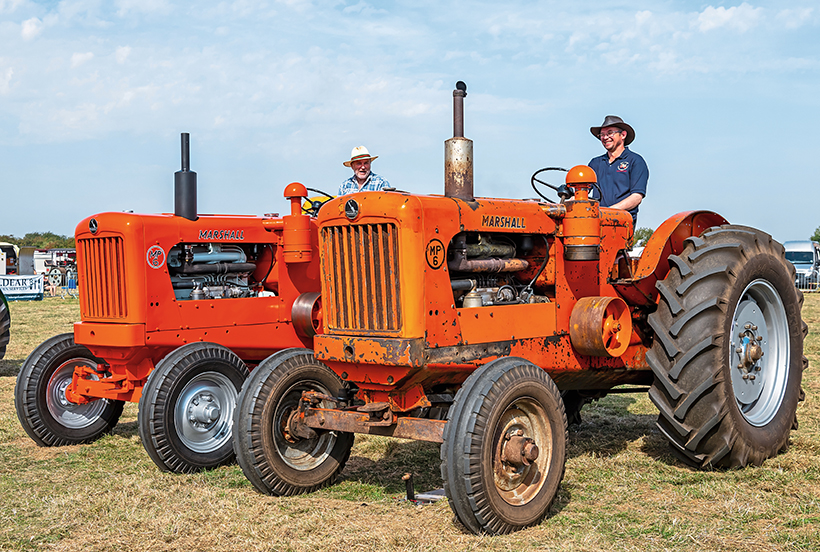
Geoff Scott-Coomber and Neil Ayres on their MP6 tractors. (Pic: Paul Gregory)
In 1954, a decision was taken to replace the Challenger 1 with the new Track Marshall, powered initially by a Perkins L4 four-cylinder engine, which made its debut appearance in 1955 at the Royal Show. From 1959, the L4 engine was replaced with a Perkins Four 270D diesel engine, and it was launched as the Track Marshall 55, as it developed 55hp. From 1956 to 1963 these models were painted orange and, from 1964, the colour was changed to yellow. There were four TM55 crawlers at Haddenham (two orange and two yellow) and M Short’s 1961 machine is illustrated here.

1970 Track Marshall 90 owned by J Edwards. (Pic: Paul Gregory)
At the same time as developing the Track Marshall, the comnpany also designed a ‘tug’ tractor for use on the prairie lands of Canada and Australia. This initially was to use a Meadows four-cylinder diesel engine but, following tests, it was decided to use the more powerful 70hp Leyland UE350 six-cylinder diesel unit. The MP6 was produced between 1956 and 1961, but only 197 were built, priced at £1,450. There were two examples at Haddenham; Neil Ayres brought his original-condition MP6, while Geoff Scott-Coomber drove his recently-restored MP6 the 25 miles to and from the event.
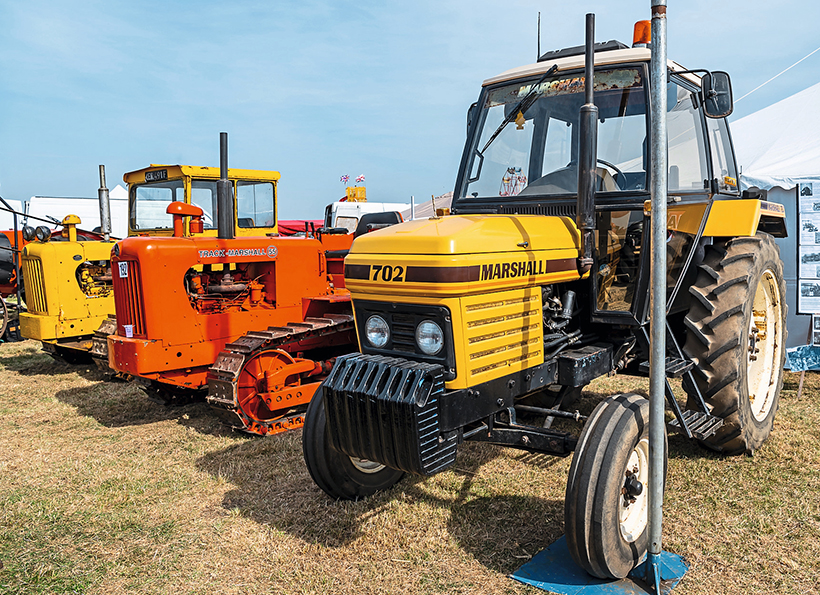
A Dunham’s Marshall 702 model. (Pic: Paul Gregory)
From 1969, Marshall re-styled its Track Marshalls, with model designations reflecting the new engine horsepowers – TM56, TM75 and TM90. The example at Haddenham was a 1970 Track Marshall 90 dozer, owned by J Edwards.
Marshall Sons & Co Ltd became Marshall-Fowler in 1969, then Aveling-Marshall in 1975. But, by the end of 1979, most of the Marshall workforce had been made redundant. Charles Nickerson acquired Track Marshall in 1980 from British Leyland followed, in 1982, by the Leyland wheeled tractor division, with production transferred from Bathgate to Gainsborough. There was one harvest gold tractor at Haddenham, that being a 702 model, owned by A Dunham.

Fowler 4-40 owned by Matthew Haylock. (Pic: Peter Love)
The Marshall Club caters for all Fowler crawlers, and there were two crawler tractors on display that were built under the Fowler name, before Fowler became part of the Marshall Organisation. The first was the Fowler 4-40 owned by Matthew Haylock. It has a four-cylinder Fowler-Sanders 40hp engine and the model was built between 1936 and 1940.
The second crawler is believed to have been built when Fowler was owned by the Howard Rotary Hoes Company of West Horndon, in Essex. It’s a Howard-Fowler prototype crawler, powered by a Meadows 4EL/AV 24hp engine, and was built in 1946. It was acquired by the Oliver family when the factory was converted to Industrial units in 1974, and is now owned by Fred Lambert.
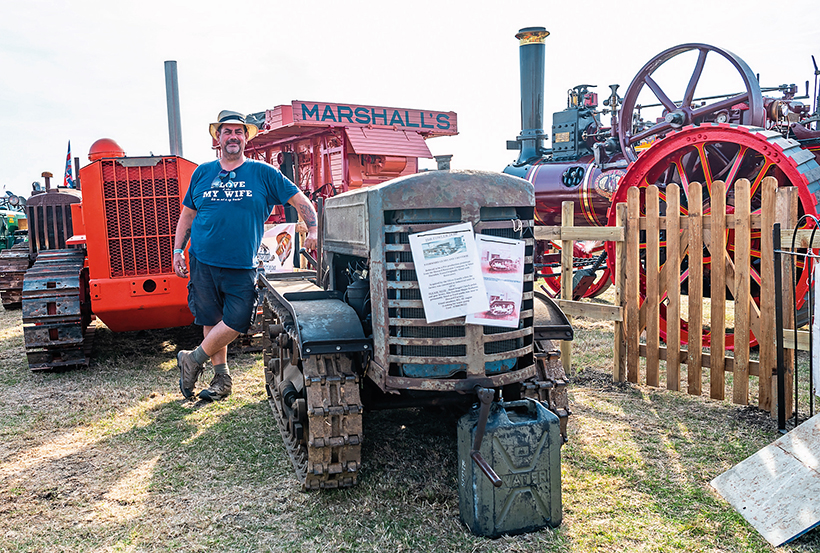
1946 Howard-Fowler 24hp crawler owned by Fred Lambert. (Pic: Paul Gregory)
The Marshall Club caters all the Marshall products manufactured, plus the Fowler crawler tractors. If anybody is interested in joining, please contact Ian Palmer via email to: ian.themarshallclub@outlook.com, or call: 07543 379769.
This feature comes from the latest issue of Old Glory, and you can get a money-saving subscription to this magazine simply by clicking HERE
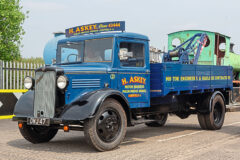
Previous Post
We visit the excellent South Yorkshire Transport Museum

Next Post
We report from the Beamish Museum’s two-day Steam Gala



